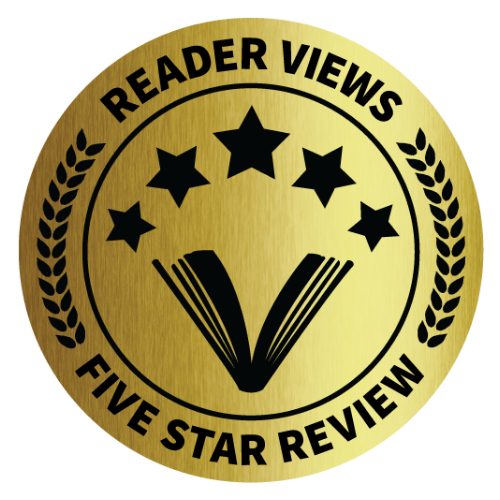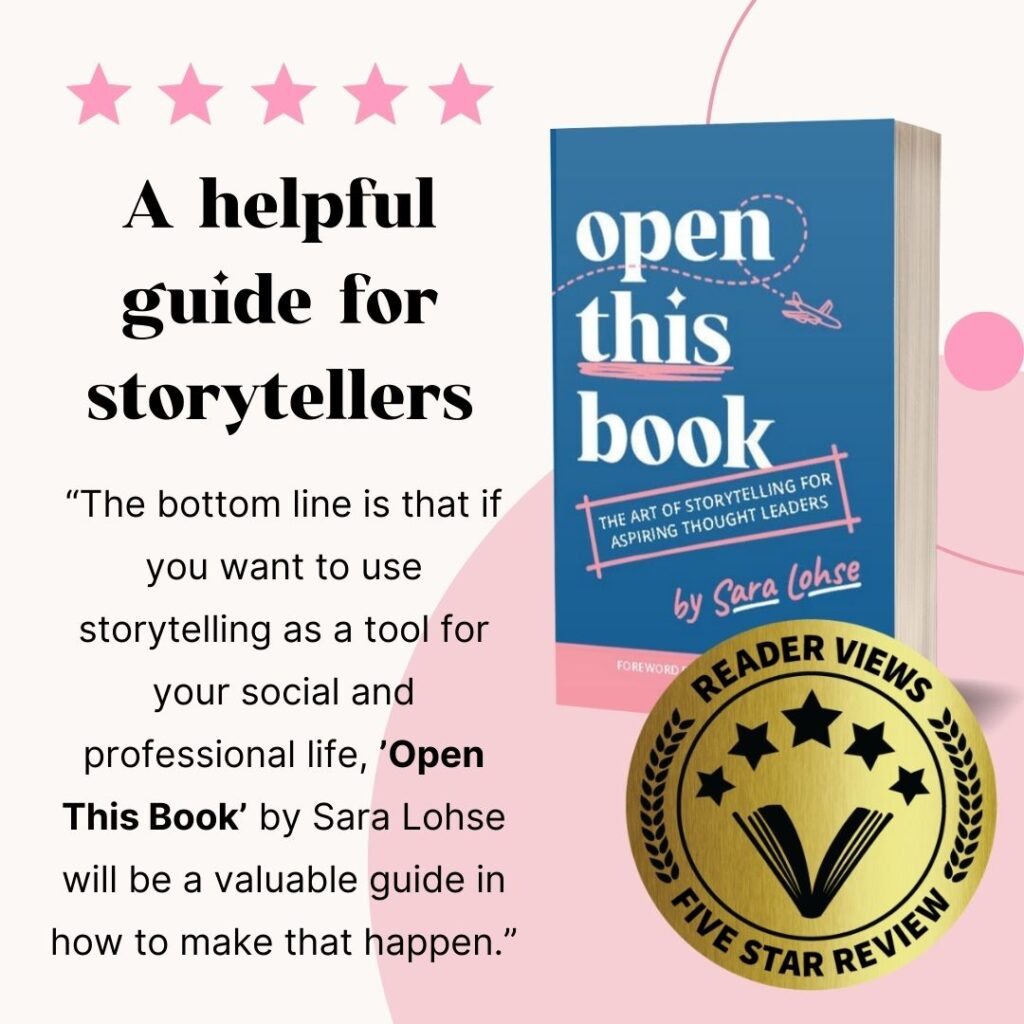
I am so proud to share the 5-Star review of Open This Book: The Art of Storytelling for Aspiring Thought Leaders from Reader Views!
Thank you to Dawn Colclasure for writing such a great review:
Got a story to share but don’t know how to tell it? Or maybe you like telling stories but don’t know how to put them to use in your career or personal life. Either way, “Open This Book: The Art of Storytelling for Aspiring Thought Leaders” by Sara Lohse is the book for you. Maybe you tell stories to pass the time at work. Guess what? You’re connecting with people. How? Let the author explain it all in her friendly and conversational way. She’s done the research, checked out the statistics and run the data. Now she’s here to share with you everything you need to know about storytelling – and how you can put it to use for you.
The author writes in the introduction:
This book is a call to action for anyone who has ever sensed a story bubbling within them but didn’t quite know how to harness its power.
I have seen the power of storytelling in a former job. It was one that was stressful and difficult at times. But the moments when I would tell stories about something funny that happened or something interesting that took place, helped those listening to the stories to laugh and feel a sense of wonder. Stories have power. They can lift a person’s spirits or inspire them to act. To this day, I still tell stories—if I can find people who will listen.
And while I may be used to telling stories, not everyone is. In fact, some people may have anxiety about sharing a personal story. “Open This Book” is made for a situation like this. Not only will it help those folks figure out how to tell their stories or what stories to share, it will also help them get past that anxiety. Imposter syndrome is one thing that holds people back, but it’s not the only thing; it’s also ageism and insecurities. This book addresses those issues, as well. So, if you’re in that boat, turn to this book for guidance and suggestions on how to move forward.
I really enjoyed reading the chapter on imposter syndrome, which seems to be happening to a lot of people these days (if what I have seen on social media feeds are anything to go by). Even though the author was sharing her own experiences with imposter syndrome, there is a lot of takeaway value from her stories. And the best thing is something she tells a person on page 54:
Everyone has something to teach.
This book may be about how telling stories can help you move forward in your career, nurture connections with others and help guide you in making decisions, but it also talks about storytelling itself. It provides information about the neuroscience of storytelling and the different kinds of stories for different types of situations, as well as how they serve different purposes.
What is it about storytelling that we love so much? Is it the drive to connect with others? Or is it a great form of entertainment we’re always ready for? One thing about stories is that they tend to share with us something new. Something we haven’t heard before. They can add to our knowledge and broaden our awareness. And this is something we will want to do if we hope to make strides in our careers and social lives.
Cross over to other fields, listen to different voices, and let those unique perspectives challenge and enrich your understanding. (Page 171)
Some people may feel that you need to be an “expert” or an “authority” to tell stories. But the truth is, there are no real experts. Just people who are endlessly curious.
To be endlessly curious is to recognize that no matter how much you know, there is always more to learn. It’s to understand that with every question answered, several new questions will emerge. I want you to lean into your curiosity with the reckless abandon of a small child holding a magnifying glass: run through the backyard of your industry, look under rocks in search of microscopic worlds, peek around corners that lead to the unknown, dive deeper into the rabbit hole without worrying about getting mud on your new shirt.” (Page 170)
Everyone has a right to tell their stories and share their experiences. Every story can move someone and encourage change – or event sales.
Remember, it’s not about being the person who speaks the loudest. It’s not about standing on a pedestal, preaching to the masses. It’s about being in the crowd, sparking conversations that matter. It’s about being the person that says what others are thinking but are too afraid to voice. It’s not about getting people to buy what you’re selling, but about getting them to buy into what you’re saying. (Page 140)
Before I read this book, I didn’t know there was a difference between a thought leader and an influencer. I thought they were the same thing, so I appreciated that the author described the difference between the two. I also like this quote later in that part of the book, which really hits home the role a thought leader plays:
Being a thought leader demands a duality: the empathy of a storyteller and the intellect of an expert. (Page 195)
I feel this book is useful for anyone in business, for people who work in a field where they must interact with others or attend conferences, as well as for anyone who just wants to be a better storyteller. This book caters to all those readers, and perhaps others as well. The bottom line is that if you want to use storytelling as a tool for your social and professional life, “Open This Book” by Sara Lohse will be a valuable guide in how to make that happen.

